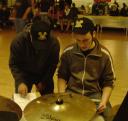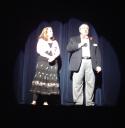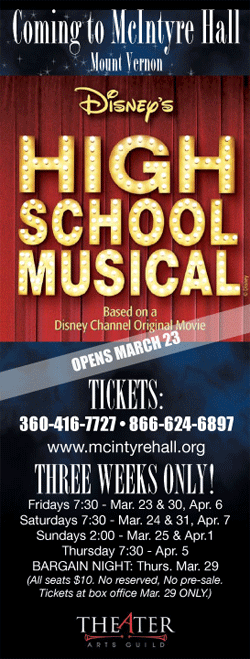During an initial rehearsal with the vocal chorus of a musical, something seemed out of place to me. The cast was very talented, there was just a lack of focus. How do you get all that talent to bring it as far as they can? I spent the better part of a week mulling this over. I came to the conclusion that the lack of focus had nothing to do with a lack of intent. It had more to do with a lack of knowledge on how to rehearse most effectively. Or more accurately, a lack of quality rehearsal habits.
Thoughts and actions repeated become habits. Through repetition you can create the habits you want for your cast that will make the difference in between an ok show and an exciting adventure.
Breaking in a cast can seem a little like breaking in a horse. So know in advance what your expectations are and keep driving that home until it happens without thinking. Here’s a two step process I used tonight for breaking in a new cast and I feel it was effective.
FOCUS AND CONCENTRATION
I think a non-equity (read non-professional) cast needs a delineation for when concentration begins. I began by showing them a hand clap signal. I clap a “ta-ta-teetee-ta” rhythm and they respond in like. Over the evening we repeated this with an expectation of total silence at the end. Perhaps a little grade-schoolish, but a good tool bringing a large cast back to focus. If there wasn’t silence then I would repeat the sequence. The whole idea being to make the instant focus switch a habit.
Most pros have an imaginary veil they step through that delineates a time for focus. At some point they were probably taught how to do that. If there’s something you do well, there’s probably a little pause you take before beginning the task. That’s your mental preparation.
VISUALIZATION
I had the cast split up into four sections. We did “Row Row Row Your Boat” as a round with each part singing once through and starting every other line. There were some snickers because that was a bit silly. Then I asked them to do it again but not to sing. They were instructed to hear the parts in their head. There were a lot of confused looks and hands went flying up, and I just cued the first group who started singing. A few started singing, not quite understanding the game yet. I stopped and told them again that we were doing the song but no one should sing, they should just hear it in their head. I started the first group, then the other three.
Here’s the great part. In many of the cast’s eyes I could see a lightbulb shining. An “AHA” moment. Many of them could indeed hear the singing in their minds. I wonder if for some of them this was the first exposure they had to visualization as a rehearsal tool.
Then they were instructed that while one part was practicing, they should be running their own parts in their minds. That’s the purpose of this exercise. For cast members to get in the habit of rehearsing parts in their head while other groups are singing.
Keep demonstrating different takes on visualization until it becomes a habit for the cast. As a musician, I can see most of the music I play in my head. If I can’t see it, that means I don’t really have a grasp on it. Many times I’ll practice in my head to find out the rough parts I need to work on. If I can’t see it, then that’s what I have to work on.
May seem like work, but this is one rehearsal tip for lazy people. By incorporating visualization into your practice time you can get as much done in 1/3 the time.
If you have other visualization tips for actors and singers please drop a comment here and let me know about them.


















